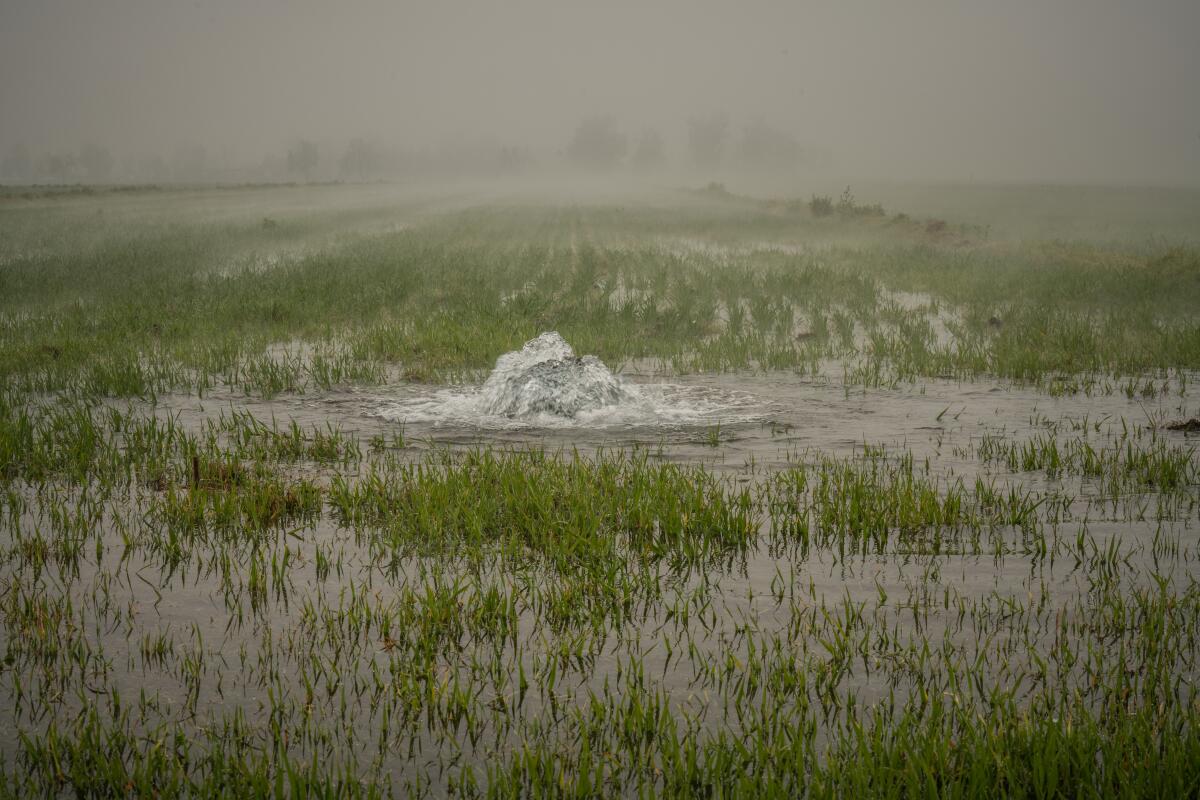Letters to the Editor: Achieve groundwater sustainability in 2040? That’s too late

- Share via
To the editor: Researchers are reporting that the aquifer of California’s Central Valley is dropping precipitously and the rate is accelerating. Hydrologist Jay Famiglietti said of the groundwater that the “trajectory we’re on right now is one for 100% disappearance.” It took many thousands of years for that underground basin to fill.
But not to worry. California’s Sustainable Groundwater Management Act gives many local water agencies until 2040 to attain sustainability.
2040? Really?
As the large agriculture interests suck the aquifer dry for profitable and thirsty crops such as almonds, the small farmers’ and residents’ wells are going dry. It is estimated that up to 70% of the almond crop is exported.
Ironically, the Central Valley once held Tulare Lake, the largest freshwater lake in the western United States until it was drained. It had free-flowing rivers before they were dammed and vernal wetlands that were filled. All of these contributed to groundwater sustainability.
Tony Baker, Rancho Palos Verdes
..
To the editor: Folks, wake up and smell the coffee — if there is any water left to brew it.
Let’s face it: The California population experiment has failed. Sorry, but our environment can’t handle more people or houses.
We’re running out of water, we have bad air, our infrastructure is crumbling and well-paying jobs are leaving. Yet Sacramento is now the developer’s best friend. It is forcing cities to build more housing and increase density, destroying our life quality in this once-beautiful state.
Mark Algorri, Pasadena




